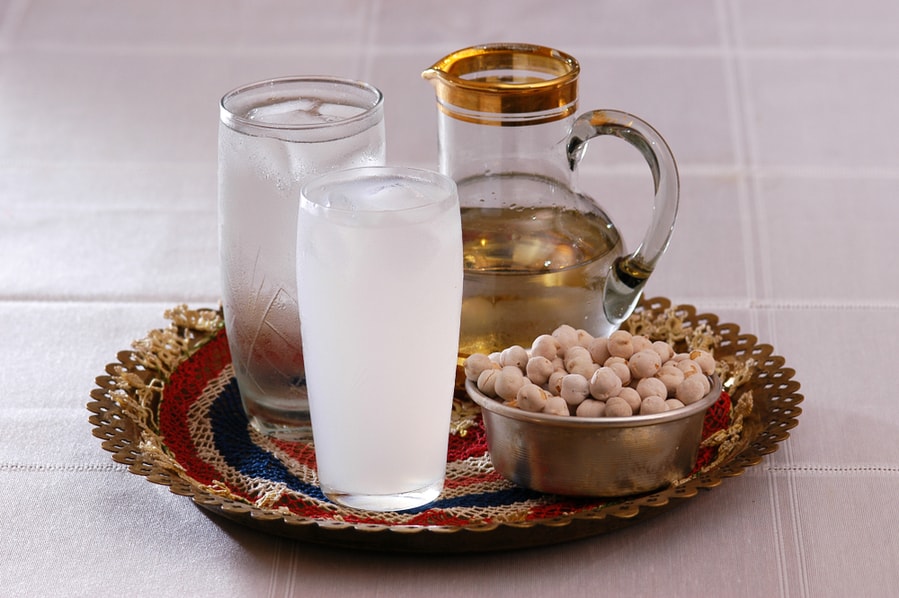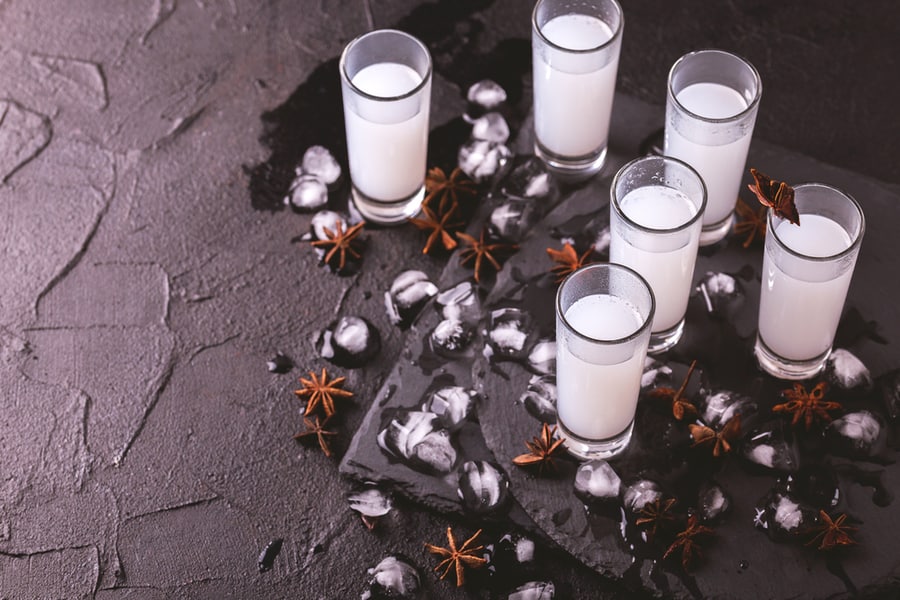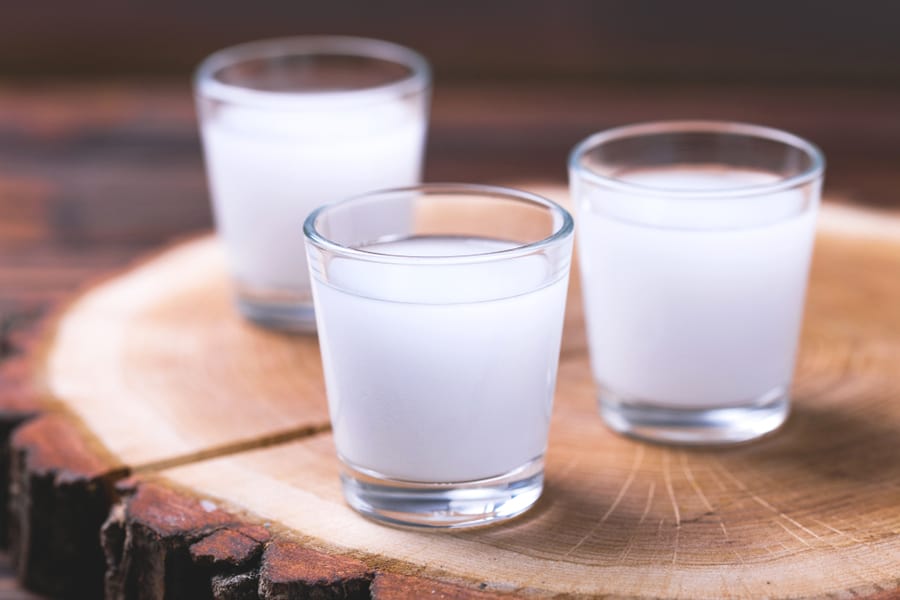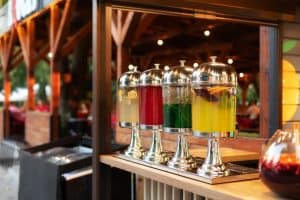
Arak has a long history, dating back to the 12th-century Arab innovation of alembic distillation. Countless ages after its emergence, arak remains the distilled drink of people throughout the Middle East and those who cherish its history and strong aniseed taste.
Now, how do you drink arak?
Arak is a rare drink that may be enjoyed before, during, and after a meal. Traditionally, arak is cut with water in either a fifty-fifty ratio or one part arak to two parts water. Ice is added at the end of either mixing method. Or you could be brave and mix up an arak cocktail or two.
First, we’ll examine what arak is before we’ll delve into how to drink arak the traditional way and offer some unique cocktails for this fantastic spirit.
What Is Arak?

Let’s start at the beginning; what is arak? Arak, also spelled Araq, is a Levantine anise-flavored distilled alcohol that is colorless and unsweetened.
The Greeks have ouzo as their national drink, and Lebanon has arak as theirs.
Arak from Lebanon and Syria is flavored with aniseed (yansoun in Arabic) but contains no sugar or other additives. When water is added to the spirit, it louches—resembling diluted milk.
Arak might also be the first distilled drink ever made worldwide. While fermented beverages dating back to the earliest eons of human history, they usually attained a maximum ABV of around 16%. Distillation, most likely invented or discovered by the Arabs, pushed this way beyond those limits.
It is uncertain when Arabs discovered the particular procedure for distilling liquor, but by the ninth century, Arabs were widely disseminating their expertise.
It makes sense, especially given that the term alcohol is derived from Arabic too. We can only thank them for sharing this knowledge with Irish monks.
Otherwise, we might never have had whisky and other distilled spirits!
How To Drink Arak

Arak is a rare drink that may be enjoyed before, during, and after a meal since its powerful flavor complements all of the primary components in the most popular Middle Eastern cuisines.
The tastes of the spirit stand up to the intense heat of raw garlic and the acidic sting of fresh lemon, but it also cleanses the palate between portions of heavier cuisine like grilled meat or a nutty tahini sauce. It’s also a great digestive aid.
Traditional Drinking Style
Traditionally, arak is cut with water and rarely drunk neat. If you drink arak neat, you miss the opportunity to experience its range of flavors, which is overwhelmingly strong.
There are two ways to drink arak in a traditional way – one part arak to two-thirds water and half-and-half.
- First method: First, fill the glass or cup with one-third of arak and add two-thirds of the water. Ice is added right at the end.
- The second method: Half-and-half, is precisely as the name implies: one part of arak and the same amount of water is added. Adding ice is recommended.
Arak is usually served with mezza, which are small dishes of food that can either be a meal on its own or part of a multi-course meal.
The drink will turn a milky white color, a hallmark of anethole, the essential oil that gives anise its signature licorice flavor. There’s also a bit of chemistry involved—the oil forms an oil-in-water emulsion, causing the light to scatter.
Remember to toast your companions: Kasaak is used when addressing males companions, while Kaasek is reserved for toasting female company.
Serving arak also has a courteous component attached to serving the drink. You’ll never use the same glass twice because the louche forms a thin film inside the glass. Instead, you’ll be presented with a clean glass when a round of arak is poured or your drink is finished.
A waiter might offer you baladi if you visit a restaurant in Lebanon. It is the homemade version of arak.
Other Ideas
Cocktails. The answer to most questions in life is a cocktail. Got a spirit you don’t know, look up a recipe and mix it.
Arak has a unique but strong aniseed taste that may cause some drinkers rather avoid the drink.
The Araknophobia cocktail is an antidote to this and a twist on the classic espresso martini. The combination of aniseed flavor, when combined with Lebanese coffee, cardamom, coffee liqueur, and vodka, makes a potent cocktail that you won’t forget soon!
Cocktails & Bars created the Byblos Blush cocktail to fill the gap for arak cocktails. They aimed to create a cocktail that doesn’t mask the arak’s flavor.
If you don’t feel like a very involved recipe, 1½ ounces of arak topped up with Coke or Pepsi to your taste and a lemon wedge is a great and easy cocktail with minimal effort on your part.
Distilling Arak

Araq (or arak) is Arabic for ‘sweat’ or ‘juice.’ In this case, the ‘sweat’ refers to the droplets that form when the spirit is distilled. It is typically created as a handmade spirit with expertise passed down through generations, in addition to commercial manufacturing.
Arak in Lebanon is controlled and must be made from white grape varieties, and just like some whiskeys, distilled three times. The final spirit is diluted to roughly 53% ABV and allowed to age for a year.
The first process is fermentation, in which crushed, fresh Obaideh and Merwah grape must (the untreated, pressed juice) are allowed to ferment with natural yeast.
After fermentation, the wine is placed into an alembic still (named a karkeh) for the first round of distillation, yielding spirto, a natural spirit that’s still far from arak. The spirto is then diluted with water for the second distillation.
Fresh, green aniseed is introduced to the spirto-and-water combination during the second or subsequent distillation. The heart cut is made, and the heads and tails are discarded (just like whisky and other distilled spirits).
The finished spirit contains alcohol by volume of around 53%. Commercial arak can range between 50 and 60% ABV. The final product is aged in clay jars for up to a year to allow the flavors to mellow and develop.
The final product is bottled and commercially sold.
Conclusion
Whether you’d like to try arak for the first time in the traditional way of ‘cutting’ it with water or mixing up a unique cocktail, arak deserves to be tested.
Don’t let the strong aniseed taste put you off; add more water until you find the perfect balance and enjoy the drink. Remember, arak is to be savored and not rushed.
Kasaak / Kassek, Friends!









